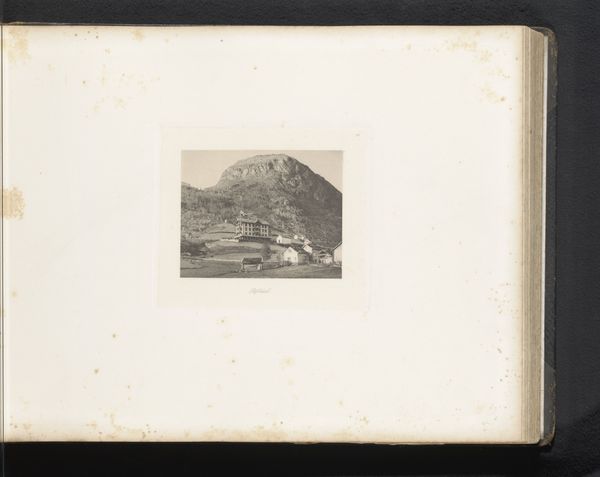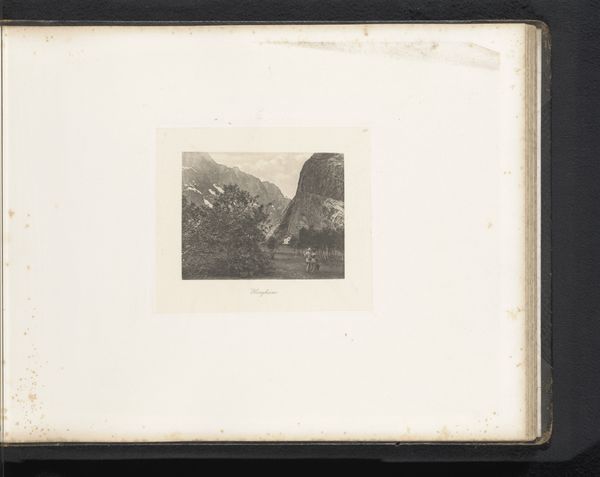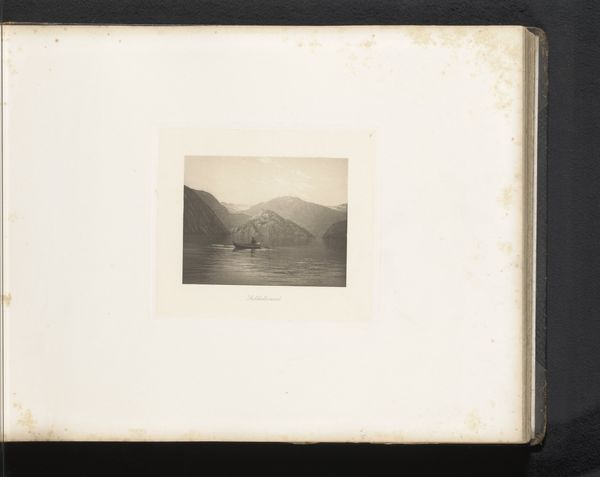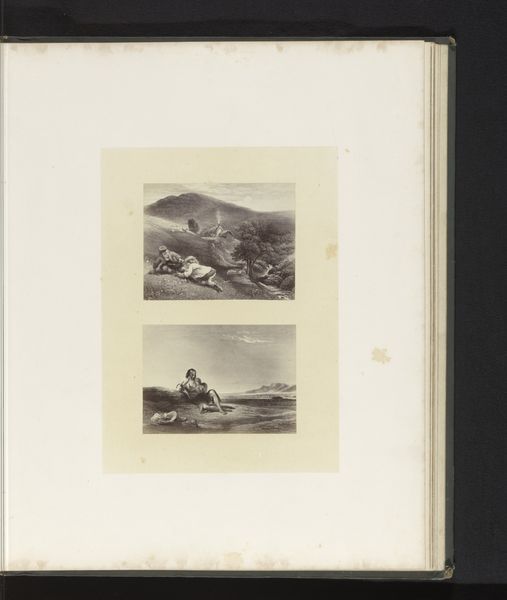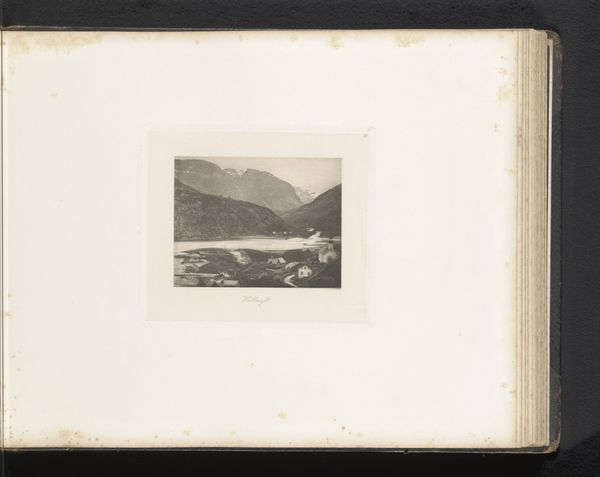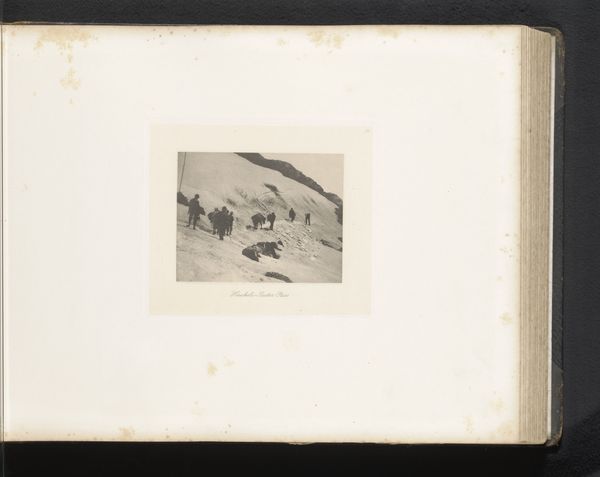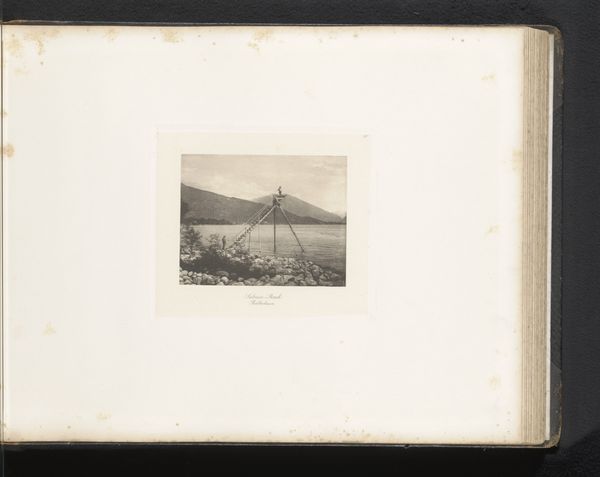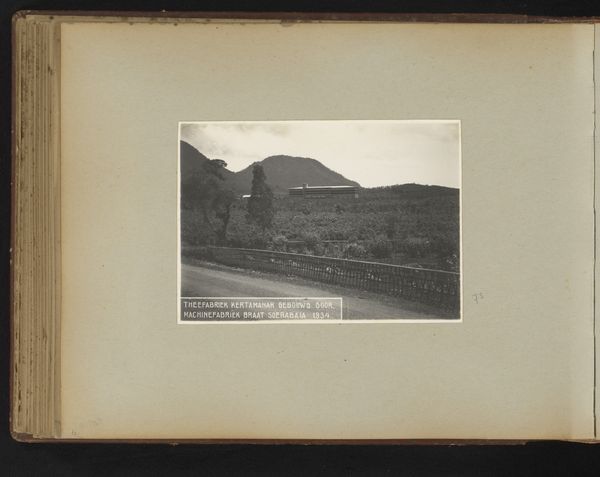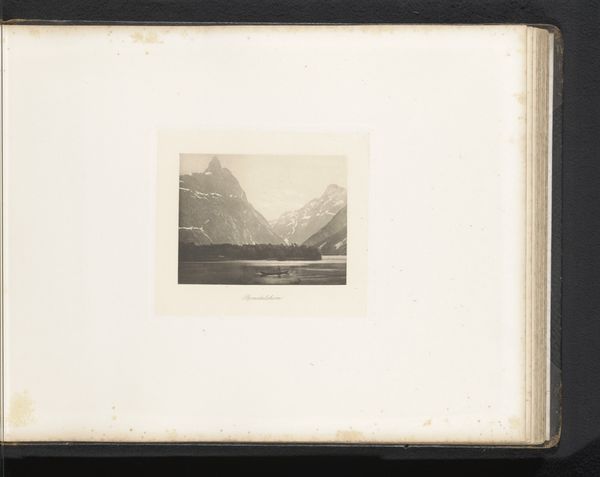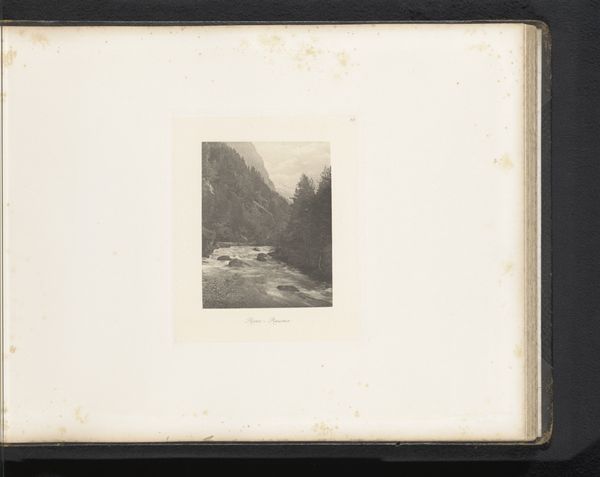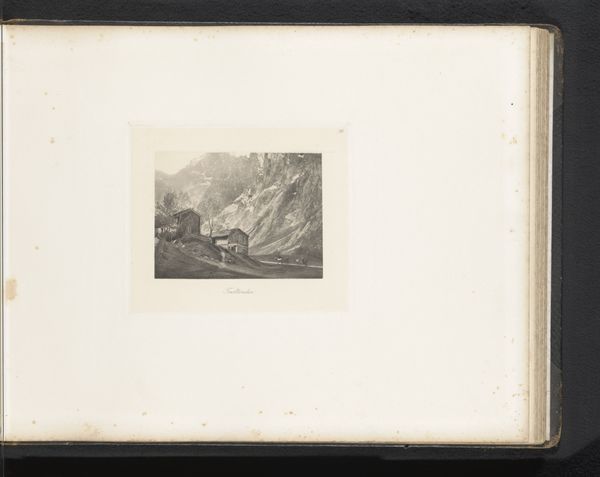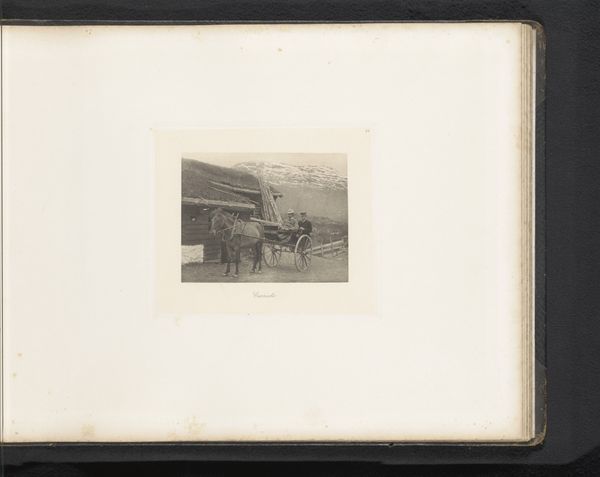
print, photography, gelatin-silver-print
# print
#
landscape
#
photography
#
gelatin-silver-print
Dimensions: height 93 mm, width 115 mm
Copyright: Rijks Museum: Open Domain
Editor: This is "Gezicht op de staafkerk van Borgund," taken before 1893 by Paul Lange. It’s a gelatin-silver print capturing a stave church in a mountainous landscape. What I find striking is how the church seems both imposing and dwarfed by its environment. What aspects of this print do you find most compelling? Curator: For me, it's the materiality of the photograph itself, particularly how it represents the transition from older, artisanal photographic processes to more industrial ones. Lange used a gelatin-silver print, a process allowing for mass reproduction. Consider what that implies about accessibility and the democratization of images, versus a unique, hand-crafted print. Who then could own this image, and how was that different from previous practices? Editor: That's an interesting point about democratization. It wasn’t something I initially considered. Do you see any other socioeconomic implications in the photograph? Curator: Definitely. The image presents a carefully constructed view of Norway's past, probably meant for a growing middle class with money to travel. Tourism was expanding, so images like this become commodities that feed into desires for "authentic" experiences of other cultures, and even ways for middle class European individuals to define themselves. Were the lives and labour of local workers affected by that interest in tourism and images like these? Editor: It shifts the focus from just the aesthetics to the conditions under which this photograph was made and consumed. I never thought about it that way. Curator: Exactly. How photography participates in a system, the flow of capital, is also really crucial in this period of transition. Editor: Thank you, that’s fascinating; thinking about photography's role in that early tourism market gives it new context. Curator: It highlights that even seemingly straightforward landscape images are embedded in material realities and systems of exchange.
Comments
No comments
Be the first to comment and join the conversation on the ultimate creative platform.
